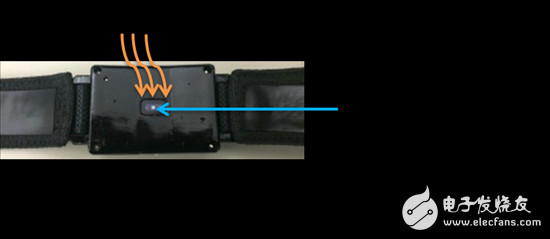It seems that you don’t need to bother too hard to find out how people complain about the accuracy of the optical heart rate smart watch. Many tech blog commentators point out that you will benefit from its activity and sleep tracking capabilities (rather than the optical heart rate monitor) to achieve your health and fitness goals.
When optical heart rate technology was introduced for the first time, accuracy issues seemed to have negatively impacted the importance of the technology for improving health and fitness for many consumers. The accuracy of optical heart rate readings is far less than expected because our human anatomy presents several major challenges.
In order for the optical heart rate monitor to work, accurate alternating current (AC) readings from the photodiode are required. But getting AC readings is very hard because there are so many DC outputs from outside the system. The DC offset correction technique allows you to read AC waveform information while minimizing performance issues with the DC output. The technology operates in such a way that an offset subtraction digital-to-analog converter (DAC) eliminates any DC noise generated by a noise source such as ambient light. In addition, DC noise from the skin and arteries also requires some correction. Using this offset subtraction DAC, you can better read AC waveform information and amplify the rest of the signal to achieve large gains and higher accuracy, as shown in Figure 1.

Figure 1 : DC offset correction for greater gain
Another problem with early optical heart rate watch styles is that sweat or any kind of moisture on the skin can cause inaccurate readings that severely limit the effectiveness of the watch. The solution is to put a glass of moisture between the watch's LED and the skin. However, reflections from the glass (between the skin and the LEDs) can lead to crosstalk, which in turn causes the heart rate readings to include errors due to noise, as shown in Figure 2.

Figure 2 : Crosstalk between ambient light, smart watch bottom glass and LEDs
In a study example completed at the TI lab, we tested a wristwatch design with neither a glass barrier nor proper DC correction, measuring an AC output of 3.5mV. When we only added glass, the AC output dropped to 2mV, sometimes reaching less than 2mV. Finally, we used the TI AFE4404 analog front end (AFE) for wearable optical heart rate monitoring and biosensing applications. The AFE4404 offers a feature that enables DC offset correction - reducing crosstalk by its ability to isolate important AC signals from DC noise. In our last test, we measured the AC output at 15mV, which is almost five times the AC output in the first case and seven times the AC output in the second case.
Nanning Ousibang Information Technology Co., Ltd. , https://www.ousibangvape.com
